Animals at the San Antonio Zoo go wild during the solar eclipse, while creatures panic as day turns to night
Animals at a Texas zoo panicked yesterday thanks to the total solar eclipse as night turned into day.
San Antonio Zoo employees have created clips for a video yesterday of four different species going crazy during the solar eclipse.
The hyped animals in the video were meerkats, whooping cranes and flamingos. Some were seen rushing to their nighttime habitat as the eclipse came in, even though it was in the afternoon. Others screeched and flapped their wings at the change in light.
“While it’s possible that some of this behavior was coincidental, it certainly made a difference on a normal day for all of us – humans and animals!” read the video description.
According to the National Weather Servicethe partial solar eclipse in San Antonio began at 12:14 PM and ended at 2:56 PM.
San Antonio Zoo worker captured clips of animal responding to April 8 solar eclipse
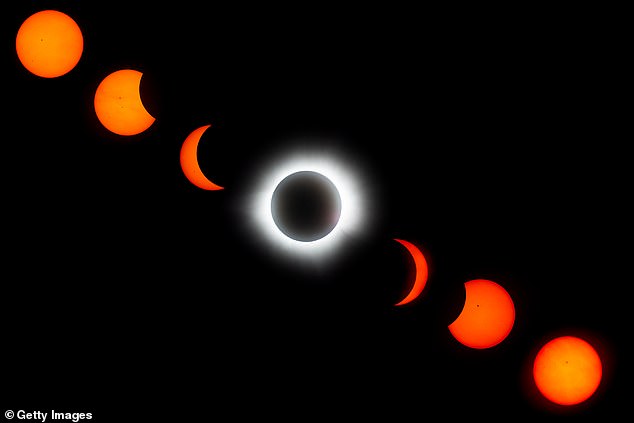
According to the National Weather Service, the partial solar eclipse began at 12:14 p.m. in San Antonio and ended at 2:56 p.m. Pictured: A composite of the eclipse as seen in Mexico
A total solar eclipse occurs when the moon and sun are perfectly aligned, with the moon close enough to cover the entire sun.
Americans across the country stopped what they were doing to watch the solar eclipse, with the grand finale in Maine. The last total solar eclipse visible in North America was in 2017.
The rare event will occur again in the contiguous US, but sky watchers will have to wait until August 2044.
This could be a disappointment for stargazers in the US and a relief for the animals at the San Antonio Zoo.
The animals couldn’t stop jumping or running away as the sky slowly turned dark. The animals that apparently sprinted the fastest were the meerkats: African animals that love sunbathe.
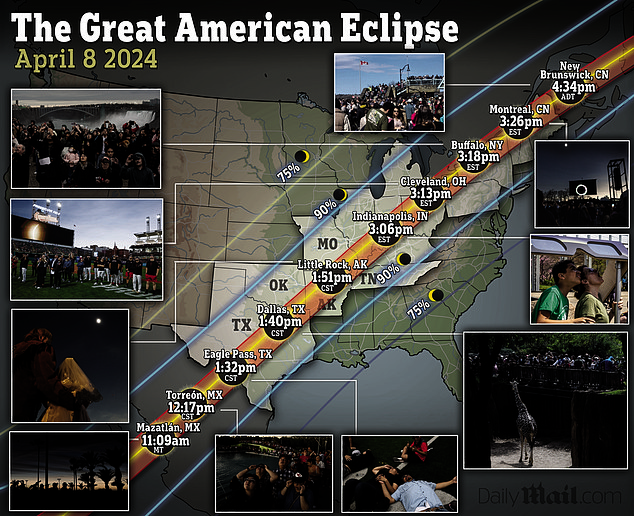
A total solar eclipse occurs when the moon and sun are perfectly aligned, while the moon is close enough to cover the entire sun
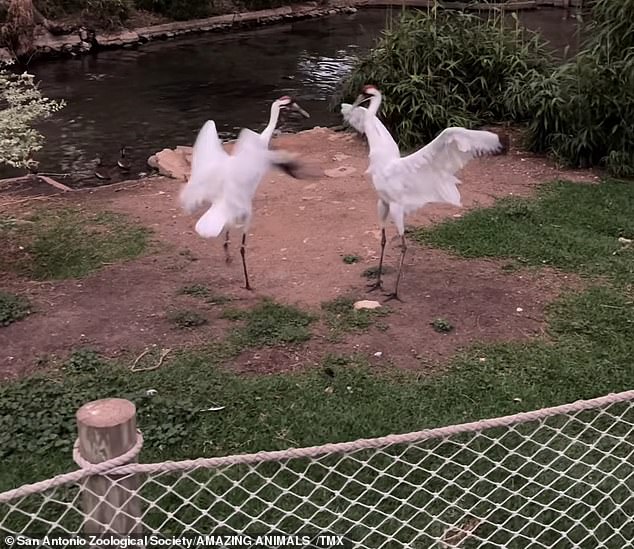
Americans across the country stopped what they were doing to watch the solar eclipse, with the grand finale in Maine. The last total solar eclipse visible in North America was in 2017
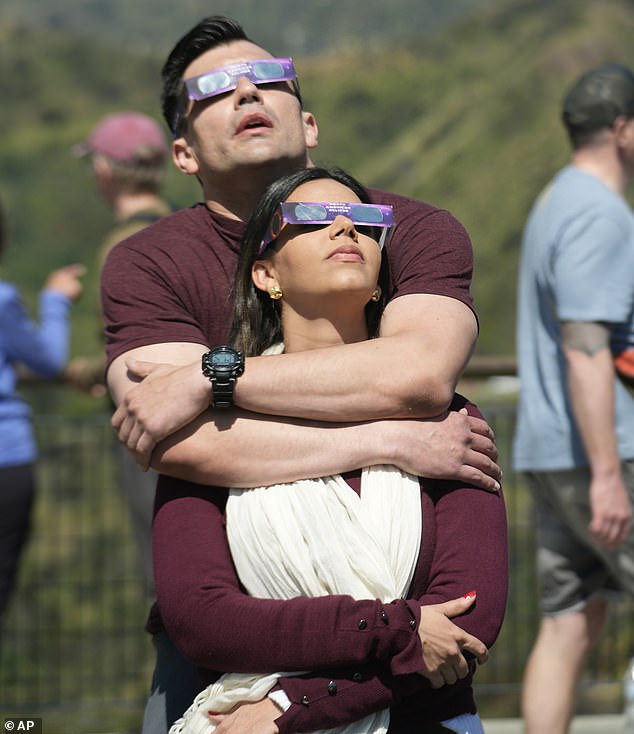
The rare event will happen again in the contiguous US, but sky watchers will have to wait until August 2044. The next total solar eclipse will be seen by people in Greenland.
A separate video of the meerkats shows them taking up their indoor habit shortly before the eclipse peaked. The African species are diurnal, meaning they are awake during the day.
According to the zookeepers, the correctly predicted meerkats would show their ‘evening activity patterns’ as soon as the solar eclipse reached its totality.
The flamingos also stayed in packs, but instead of running away, they seemed to walk quickly.
A few of them moved their wings and some flew into the air, just like the jumping whooping cranes of the zoo.
Like meerkats, whooping cranes are diurnal and fly during the day and rest at night.
The whooping cranes at the San Antonio Zoo did the opposite of that in their habitat, and their jumping up and down was called “dancing just after totality.”
San Antonio’s animals weren’t the only ones excited during the eclipse; Zoos across the country shared clips and videos of animals reacting to the sight on Monday.
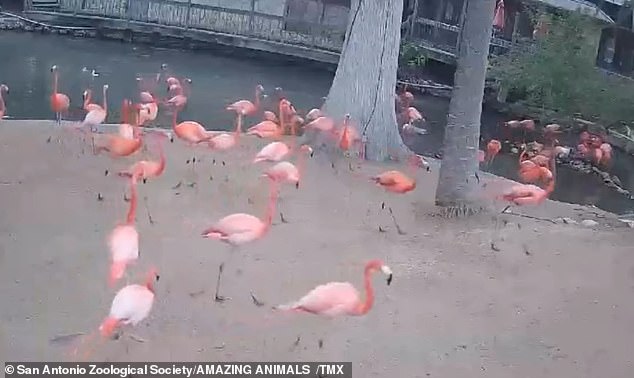
The flamingos at the San Antonio Zoo also stayed in packs, but instead of running away, they appeared to walk quickly. Some of them moved their wings and some flew into the air
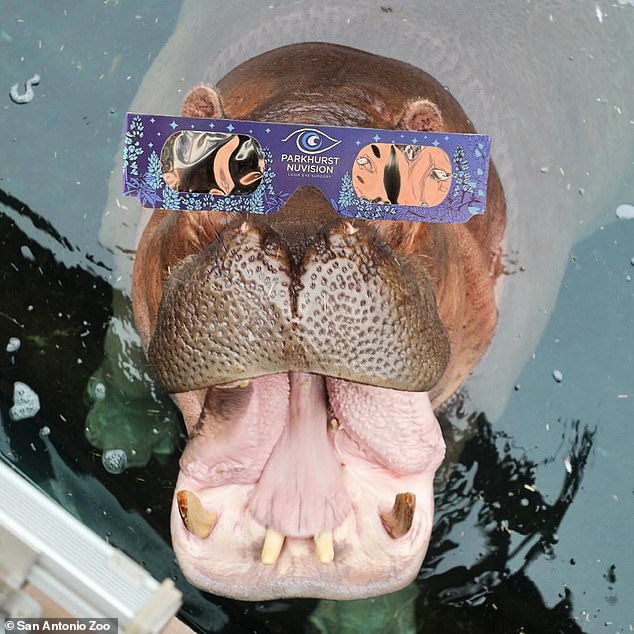
Animals at the Dallas Zoo reacted to the eclipse, including giraffes and ostriches. However, their elephants and gorillas were not affected
The giraffes, zebras and ostriches were in panic at the Dallas Zoo during yesterday’s total solar eclipse.
The Dallas Zoo hosted a special eclipse event for their guests and the staff shared how their animals reacted as their visitors watched the totality of the eclipse.
Zookeepers assumed primates would be most sensitive to the rare event.
However, when it got dark, their ostriches gathered in the middle of their cage and one of them even laid an egg before the sun set. Their penguins and flamingos also huddled in their habitat.
It was the zoo’s giraffes and zebras running around their enclosures, some even jumping away.
Although these animals were not fans of the eclipse, the Dallas Zoo’s elephants and western lowland gorillas had no problems during the eclipse.
All the elephants did was eat, while the gorillas just yawned and stretched in their habitat.
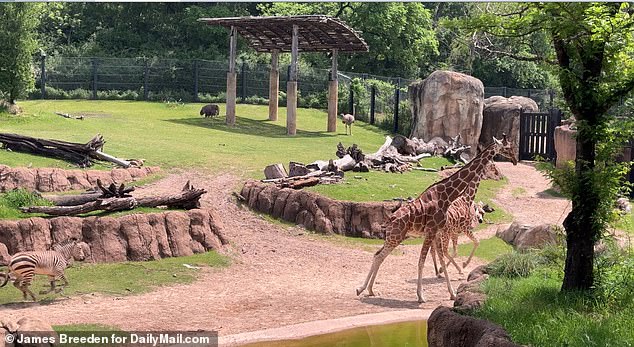
The giraffes were the first to flee, galloping through their enclosure with great strides. The zebras at the Dallas Zoo eventually did the same
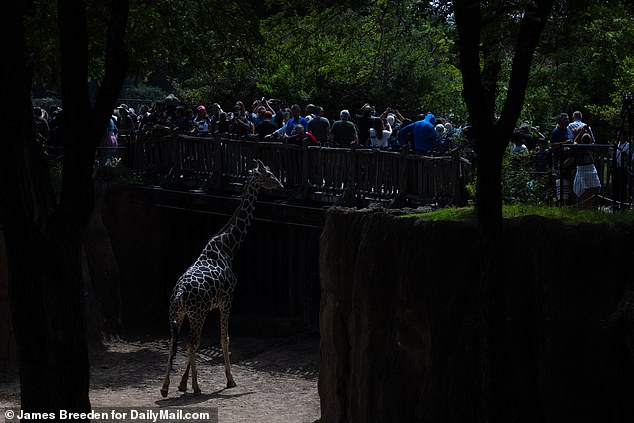
As the sky began to darken, the animals became more alert and some began to frighten
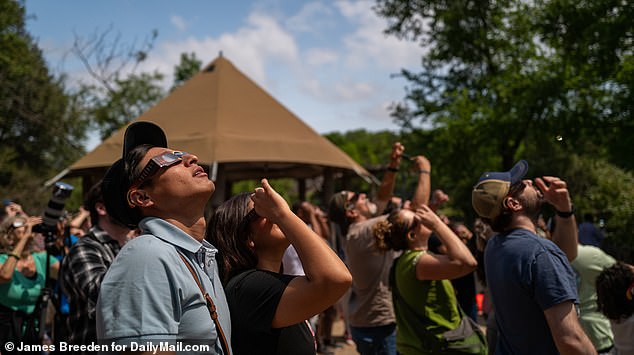
The spectators were excited about the solar eclipse and saw how the animals reacted
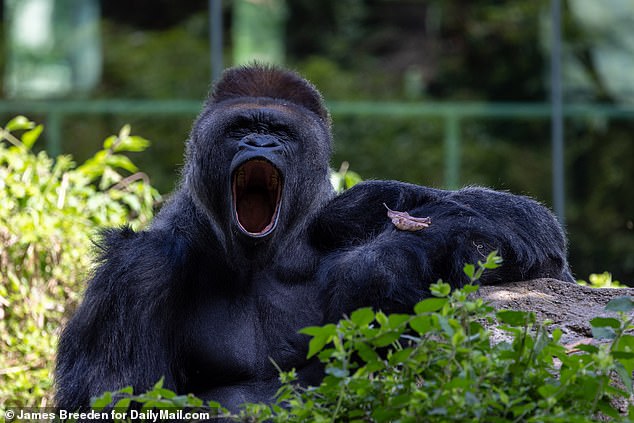
The western lowland gorillas just yawned and stretched as the sky darkened

The giraffes calmed down again after a while as the sky became lighter again
Christine Montgomery, Manager of Applied Behavior at the Dallas Zoo, told CW33, “This is the first solar eclipse we’ve had here at the Dallas Zoo, so we’re very excited to see what our animals will do.”
A 2020 study into how animals respond to the zoo said the rarity of a solar eclipse makes it a “new experience” for animals and thus can lead to “abnormal behavior.”
They found that of the seventeen species they observed, thirteen exhibited unusual behavior.
They found that some species exhibited anxious behavior, cowering or becoming silent.
Komodo dragons had one of the most interesting changes in the study, going from lying almost completely still to frantically running around until the sun appeared again.
Baboons, flamingos, gorillas, giraffes and Komodo dragons all showed concerned behavior, while birds and elephants simply behaved as if it were night.
